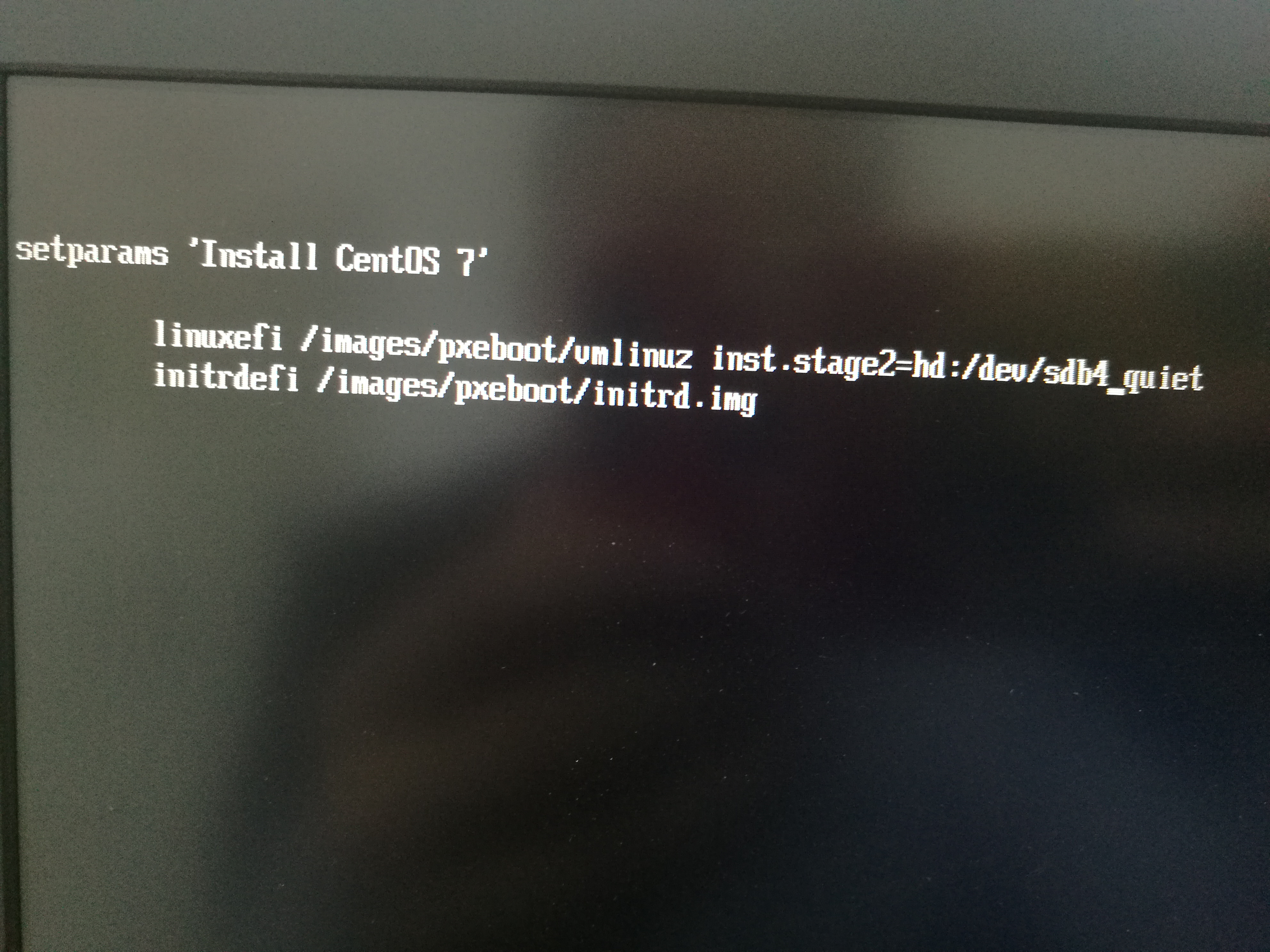-
Notifications
You must be signed in to change notification settings - Fork 13
Install CentOS 7
1.You should have an empty usb flash driver which is better more than 8GB.
2.You should have a software (UltraISO or any other softwares which have the ability to do so) to burn the CentOs7 system to the usb flash driver.
3.A CentOs system also is needed (you can get the .iso file at this CentOS7_DVD.iso).
1.Install the UltraISO software to another computer after you downloaded the UltraISO.
2.Insert the USB flash driver to the computer which you intend to install the centos system.
3.open the computer and F12 (depend on the model of your computer) to the BIOS setup interface. After that,chose the way to run system from your usb flash driver (better in UEFI model).
4.Make sure the computer to identify the usb flash driver , you need amend something.
chose the first option which is "Install Centos 7" after you enter the installtion interface.

Install Centos 7
Then press "Tab" or "e" to edit the sentence “vmlinuz initrd =initrd.img inst.stage2=hd:LABEL=CentOS\x207... quiet” to
"vmlinuz initrd=initrd.img linux dd quiet"
(in this way, you can find the list of your hardware and the usb flase driver).
After identify the usb flash driver (sometime "sdb4",sometime "sda4",sometime "sdb-n",whatever),close the computer or press "c" to enter the installtion again. Choose the first option and press "Tab" or "e" again.
 Revise the sentence I mentioned before to
Revise the sentence I mentioned before to
"vmlinuz initrd=initrd.img inst.stage2=hd:/dev/sdb4 quiet"
 and "sdb4" stand for the usb flash driver.
and "sdb4" stand for the usb flash driver.
At the last, press "Ctr+x" to continue the intalltion.
5.So far,So good.
After entering the Centos 7 Installtion interface, following the flow of the Installtion (chose language "English" and chose "GNOME Desktop" in sorware selection).
In "Installation destination" section, chose all local standard disks except usb flash drivers,then in "Partitioning",chose "I will configure partitioning" to configure the disks.
in "Manual partitioning" section, remove all the file in disks and click "Click here to create them automatically".
6.Done After all this , set the password and username.
7.Reboot
Remember not to pull out the usb flash driver in the first reboot.
After the first reboot,you can pull out the usb flash driver and the centos system is on your computer now!
- Download drivers (named Nvidia_file.run) from here, and select "Linux 64-bit" option.
- Update system and build tools.
yum update
yum install kernel-devel kernel-headers gcc make
- Blacklist Nouveau
- Edit /etc/default/grub. Append "rd.driver.blacklist=nouveau nouveau.modeset=0" to “GRUB_CMDLINE_LINUX”
- Generate a new grub configuration to include the above changes.
grub2-mkconfig -o /boot/grub2/grub.cfg
- Edit or create /etc/modprobe.d/blacklist.conf and append "blacklist nouveau"
- Backup your old initramfs and then build a new one
mv /boot/initramfs-$(uname -r).img /boot/initramfs-$(uname -r)-nouveau.img
dracut /boot/initramfs-$(uname -r).img $(uname -r)
reboot
(* Note: if the computer don't have blcklist.conf in /etc/modprobe.d/,you should edit /usr/lib/modprobe.d/dist-blacklist.conf
disable the nvidiafb
#blcklist nvidiafb
then append
blacklist nouveau
options nouveau modeset=0
then backup
mv /boot/initramfs-$(uname -r).img /boot/initramfs-$(uname -r)-nouveau.img
dracut /boot/initramfs-$(uname -r).img $(uname -r)
last to reboot the computer.
)
- Install NVIDIA driver
init 3
chmod +x Nvidia_file.run
./Nvidia_file.run
init 5
- QA
if Error:
The Nouveau kernel driver is currently in use by your system.This....
choose Yes when the system ask if add the .conf file to disable nouveau .
there will be two file (nvidia-installer-disable-nouveau.conf) added in computer.
path:/usr/lib/modprobe.d/
path:/etc/modprobe.d/
delete the command or#the command
#blacklist nouveau
#options nouveau modeset=0
Neuron Tracing
Converting Big-Image-Data
Build Vaa3D Qt6 version on Windows
Build Vaa3D Qt6 version on Ubuntu 20.04